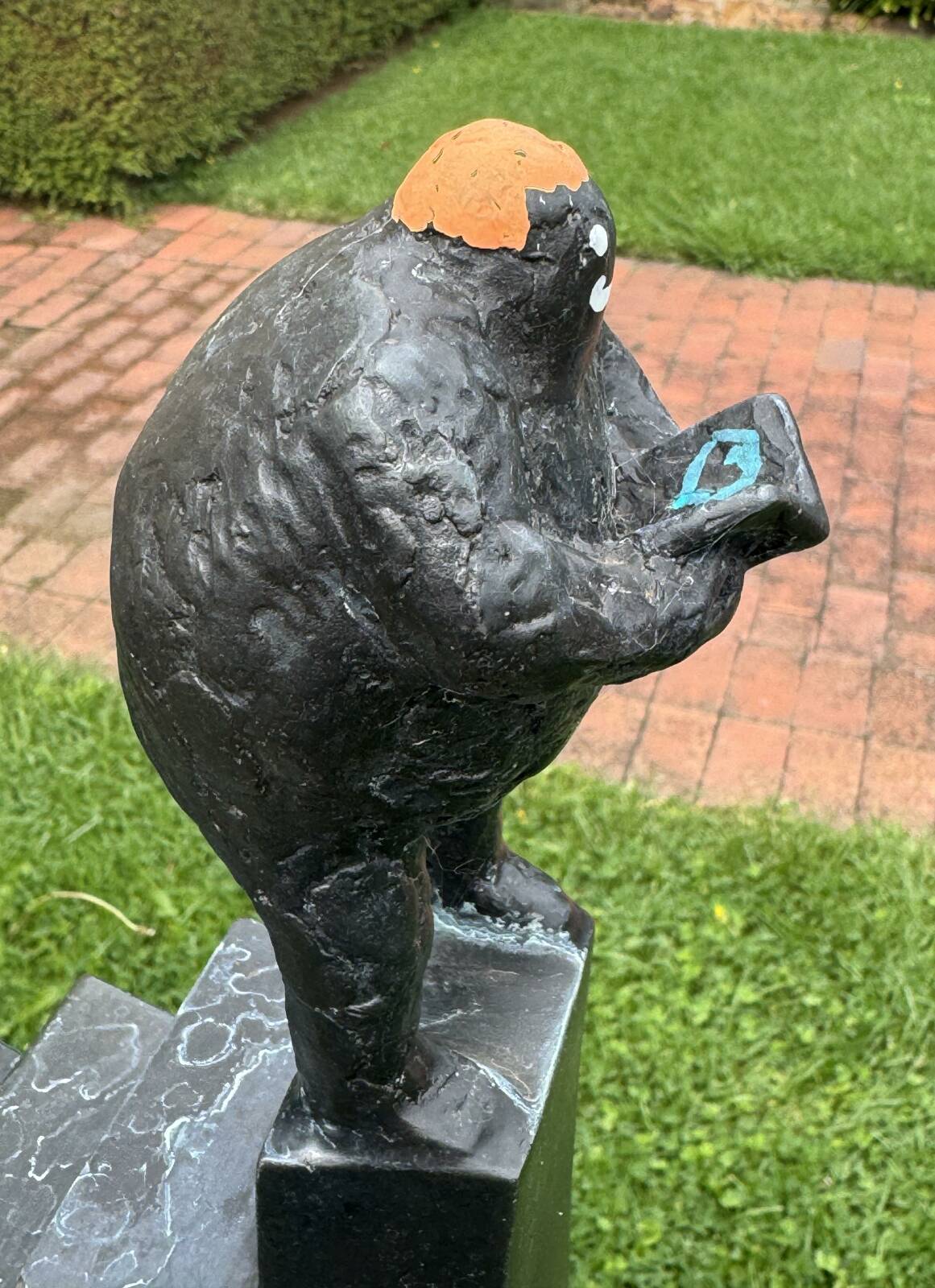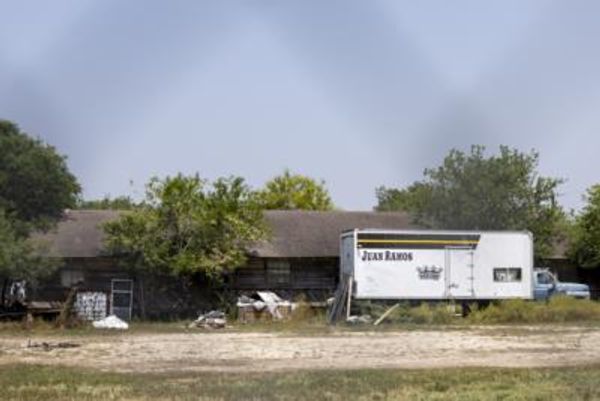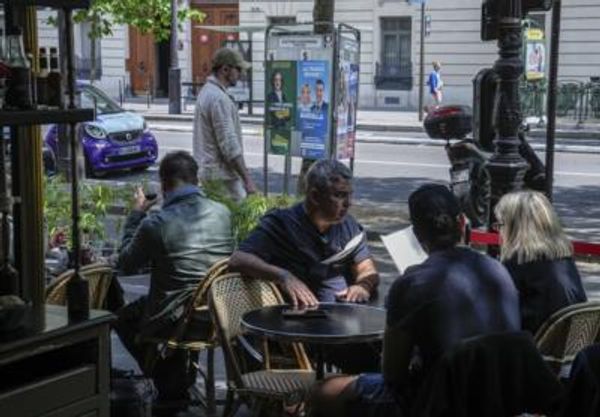On Christmas Day 1973, Lyall Gillespie drove to Black Mountain Peninsula for a picnic lunch with his family.
While we don't know what was on the menu, it was an eventful afternoon for Gillespie, for Santa delivered in a most unexpected way.
In Aborigines of the Canberra Region (Campbell ACT, 1984), Gillespie reveals while tucking into Christmas lunch he was "surprised to find numerous Aboriginal implements and flakes in the area, which was being eroded by vehicular traffic near the barbecues".
Afterwards, Gillespie, who had a trained eye for recognising Aboriginal stone artefacts, returned to the peninsula several times "and on each occasion found more implements and flakes - more than 500 in total". Heck, that's a lot.

Those stone artefacts now form part of the Gillespie Collection, a treasure trove of more than 8200 Aboriginal artefacts. While some of these precious relics were collected from other sites in south-eastern Australia, Gillespie found the vast majority (over 7000) in a 10-year period from 1964 on Reidsdale, his family's property located on the Spring Range between Gundaroo and Hall.
Of course, today Aboriginal cultural sites are protected by law, and collection is regulated and conducted only where necessary by archaeologists in conjunction with Aboriginal elders, but in the 1960s and 70s fossickers often cherry-picked the larger items, sadly not even documenting where they were found.

But not Gillespie. Having spent time in the Northern Territory where he gained a deep appreciation for Aboriginal artefacts, he had the foresight to meticulously label the location of every single find, big or small, with ink pen. This detailed labelling means that the scientific value of his collection is high, and it is possible to identify the Aboriginal people to whom they are most culturally significant.
Archaeologist Ken Heffernan, a volunteer curator at Hall Heritage Centre, the current custodians of the collection, says Gillespie's son, Neil, tells stories of his father "sitting around the kitchen table after dinner, madly labelling each new find he'd made that day."

In fact, following the death of his father in 2006, it was Neil who, in 2015, eventually decided the best home for the collection was the Hall Heritage Centre.
"Neil followed his father's wishes to have his diverse collections curated and kept together, choosing our centre for this purpose," explains Heffernan.
I'm sure the fact that Reidsdale was just over the hill from Hall and that Gillespie was an alumnus from the tiny, one-teacher Hall Primary School, now a drawcard of the Hall Heritage Centre, probably helped a bit too.
While a small number of artefacts from the Gillespie Collection are currently on loan to the National Capital Exhibition where, at Regatta Point, they wow visitors to our fair city, most artefacts remain at Hall, where, this weekend, one of the buildings housing the collection will be renamed the Gillespie building.
Alastair Crombie, the honorary curator of the heritage centre, feels privileged. "Like many similar institutions around Australia we were faced whether we remained focused on colonial and post-colonial history or if we could take the leap into Deep Time. The Gillespie Collection has allowed us to work closely with local indigenous communities and elders to realise that opportunity."
The official naming of the Gillespie building will be followed by the launch of The Journey of Lyall L. Gillespie (1919-2006), a new exhibition that shines the spotlight on Gillespie's remarkable life which included a 45-year career in the Commonwealth Public Service, where he held several senior positions.
While City Manager for the ACT from 1978 to 1982, Gillespie showed Margaret Thatcher around Canberra, including to the Mt Ainslie Lookout - I wonder if he pointed out where he'd enjoyed that infamous Christmas barbecue down at Black Mountain Peninsula. We may never know.

The exhibition also showcases his service in the armed forces during World War II where he was based at Noonkanbah, an air strip for bombing runs into New Guinea. It was during this time that Gillespie befriended Andy, an Aboriginal man from nearby Fitzroy River, who made several exquisite artefacts for Gillespie include a shield and a boomerang, prized parts of his collection.

Gillespie's interest in Aboriginal culture was reinforced when he was appointed Deputy Administrator of the Northern Territory in 1960, and during the 1970s when his work for the federal government involved coordinating the range of scientific studies that underpinned the creation of Kakadu National Park.
There aren't many aspects of life in the capital that Gillespie didn't leave his mark on, and if you peek in the Gillespie building you'll see it is also crammed with his former library, a collection of 2000 books, including an unrivalled local history collection, including his own eight volumes.
Gillespie's colossal contribution to local history was recognised by the award of the Medal of the Order of Australia in 1998.
Don't miss: Unveiling of The Gillespie building as part of the Canberra & Region Heritage Festival. Sunday April 14 at 11am. Hall Heritage Centre, 19 Palmer Street, Hall.
Exhibition: The Journey of Lyall L. Gillespie (1919-2006)], which also opens on April 14, builds upon the display of local Aboriginal stone artefacts from the Gillespie collection, Stones that Speak (2017), and will be open every Sunday 10am-4pm. It presents for the first time items reflecting the full diversity of Gillespie's work and interests, from agricultural and sport curiosities to early radios and stamps.
Did You Know? In the 1930s, Gillespie rode his bike from Hall to Telopea Park (and back) to attend high school.
A who's who of prominent Canberrans
Like any writer who dips into the historical record, your Akubra-clad columnist spends a fair bit of time hunkered down in libraries and archives, but nothing on the scale that local historian Lyall Gillespie did.
There are reports that Gillespie would vanish into an archive at opening time and only emerge at the end of the day. "Apparently he didn't even take a break for a cup of tea," reveals Dr Ken Heffernan, volunteer curator of the Gillespie Collection at the Hall Heritage Centre.
One of the results of Gillespie's industrious, if not obsessive, pursuit is an extraordinary hand-written index of record cards totalling around 40,000.

"Lyall was researching at a time before photocopiers, scanners or digital cameras, so while at a library or archive he documented everything by hand," explains Heffernan. "Most of his archival work was done on larger books and then he would transfer the key information onto cards".
According to Heffernan, guests would often arrive at Gillespie's home seeking information on the cards. "Lyall would then disappear out the back, find the relevant card and bring it to his guest."
The records are so comprehensive that Heffernan claims "if you had a relative living in Canberra prior to 1920, it's highly likely Lyall had a card about them ... they are a real treasure and great resource for the people of Canberra."
To protect the top of the cards being damaged every time the small filling cabinet drawers containing the cards are opened, with help from a heritage grant Heffernan and his team have meticulously transferred each card into archive boxes, but this doesn't mean researchers can't still access them.
"If you want to search for someone, just make an appointment with the Hall Heritage Centre," says Heffernan.
WHERE IN CANBERRA?

Rating: Medium - Hard
Clue: 100
How to enter: Email your guess along with your name and address to tym@iinet.net.au. The first correct email sent after 10am, Saturday April 6 wins a double pass to Dendy, the Home of Quality Cinema.

Last week: Congratulations to Ros Greenwood of Mawson who was first to correctly identify last week's photo as the building that currently houses the ANU School of Art and Design, previously (1938-1969) home to the Canberra High School in Ellery Crescent, Acton.
"I went to school there when my family moved to Canberra from Melbourne in 1956," reports Ros. "Back then there was no lake and a rickety wooden bridge over the Molonglo River."
Ros beat a stampede of other readers to the prize, including Conrad van Hest of Holder, Dawn Donnelly of Casey and two previous school captains, namely Don Whitbread (1953) and John MacKinnon (1964). Meanwhile, Bronwyn Rose recalls riding her bike through Civic to attend the school between 1961 and 1964. "The playground was divided in half ... boys and girls separated," she exclaims.
Curious quoits

Lyall Gillespie (see main story) had a keen interest in the history of local 19th century sport. As a result, ploughing matches, cricket, tennis, and even steel quoits feature in his histories. Steel quoits was an older sport played on a smoothed clay court that was revived in the 1930s. I wonder when the last game of steel quoits was played in Canberra?
Mystery object

Does this item from Lyall Gillespie's collection look familiar? They were widely used during World War II. Yes, even in Canberra. Answer next week.
- CONTACT TIM: Email: tym@iinet.net.au or Twitter: @TimYowie or write c/- The Canberra Times, GPO Box 606, Civic, ACT, 2601







